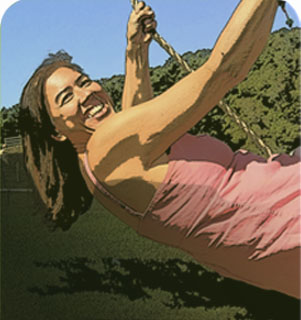Correct Yogic Posture

There is nothing about the true practice of yoga that says fancy postures, alignment, and flexibility are essential to doing it correctly. I would argue that there is nothing about healthy standing posture that is about alignment and flexibility as well. Where I would say the true practice of posture and yoga come in is in our ability to let the body move in the way it needs without judgement and to learn to rest in what is available at the moment.
Because of the forces of gravity, we have an optimal length tension relationship in our muscles to move efficiently. But that efficiency is dependent on the person, whether they are able even to stand up against gravity, or even sit up. Aligned postures come from when we are able to rest pain free in a position, and to move in and out of a place with ease according to your structure. And to be clear, ease is an internal state different than flexibility or lack of challenge.
The great irony in all this is that we need a container and a structure to be efficient and to thrive. Without the container of our body and its defining characteristics, namely the bones and fascia, the nervous system can not direct its will (brain) and action (peripheral nervous system). So yes, there is such as a thing as aligned mechanical posture and in general a correct way to skeletally align in standing and in doing a dynamic posture such as in yoga. However we must learn to do it within the means of the body – a dance between an outer structure and modality and inner structure and activation.
Because of this you will find some practitioners and teachers of yoga espouse one extreme or another: focus on skeletal alignment, and those that feel and sense as the alignment. Both are different ways to approach balance.
I use both. I find that having the embodied knowledge of skeletal alignment against gravity is essential. Not only for awareness but to understand the forces of nature that are constantly pulling and seeking to “pull me down”. This awareness and understanding is essential for prevention of injury in a mechanical and spiritual sense. It is an honoring of the Patanjali scripture of “pain that has not come is avoidable” through knowing those forces.
I also find that sensing the movement itself internally without considering alignment, namely letting the joints and body fold in an easeful way also leads me into a deep awareness state. It is a way of facilitating awareness without any perception of correctness layered on and in so doing, I can relax into awareness, creating more ease. And with more ease, I transcend different energy states without any manipulation, coming into balance in yet another way .
Most people will read the above thinking I mean that we are not supposed to challenge the body, which is incorrect. Muscles and the mind thrive on challenge, and the ways described above are a challenge depending on your temperament. The question is whether you can challenge in a way that respects the body in the present, to move toward the challenge even through sweat, occasional tears, and labored breathing, to come to a place of optimal dwelling. Moving toward that dwelling is a an art form, and one that is in constant flux depending on where you are on any given day and in any given life situation.
That process and that dwelling IS the yoga.
All this to say, know your structure, understand both skeletal alignment and its purpose, and be willing to be open to your internal experience without manipulation. And if you don’t know what I am talking about, come to my classes February 5, 12, and 19 at 630 p.m. at River Road Unitarian Universalist Church in Bethesda, Md. It only took me 30 years of practice and education to get to this. 😉
